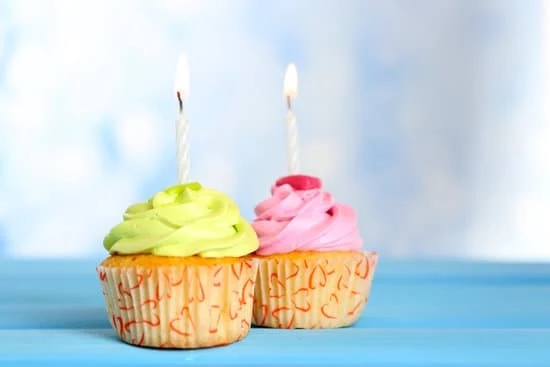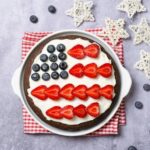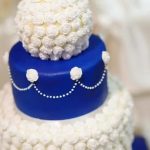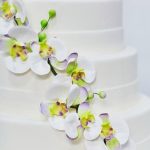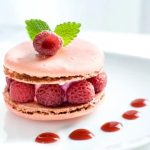Cake decorating is an art form that transforms simple baked goods into stunning creations that not only look good but taste delicious. A key element in the process of cake decorating is the icing, which serves as both the glue that holds everything together and the canvas for creative designs. Learning how to prepare icing for cake decorating is essential for anyone looking to elevate their baking skills and create visually appealing confections.
Icing plays a crucial role in cake decorating, as it not only adds sweetness but also acts as a medium for intricate designs and decorations. Whether you’re a beginner or a seasoned baker, mastering the art of preparing icing can take your cakes from ordinary to extraordinary. Different types of icing, such as buttercream, royal icing, and fondant, each offer unique textures and finishes, allowing for endless possibilities in cake decoration.
To successfully prepare icing for cake decorating, it’s important to understand the various types of icing available and the specific ingredients required for each. From basic buttercream to elaborate fondant, knowing how to choose the right type of icing for your desired design can make all the difference in achieving professional-looking results.
In this article, we will explore the different types of icing, provide a step-by-step guide on making buttercream icing, share tips on achieving the perfect consistency, and offer creative ideas for decorating cakes with icing. Let’s dive into the world of cake decorating and discover how to turn ordinary cakes into works of art.
Importance of Icing in Cake Decorating
When it comes to cake decorating, icing plays a crucial role in not only adding flavor but also in creating visually stunning designs. Icing is like the artist’s paint on a canvas, allowing bakers to showcase their creativity and skills. The importance of icing in cake decorating cannot be understated, as it not only provides a smooth surface for decorations but also acts as the glue that holds everything together.
There are several types of icings commonly used in cake decorating, each with its own unique characteristics and applications. Buttercream icing is one of the most popular choices due to its creamy texture and versatility. Royal icing, on the other hand, is perfect for intricate designs and decorations that require a firm hold. Fondant icing is another favorite among bakers for its smooth finish and ability to be molded into different shapes.
To prepare icing for cake decorating, you will need a few key ingredients such as butter, powdered sugar, vanilla extract, and milk. These basic ingredients can be customized based on your personal preference or the specific design you have in mind.
By following a simple step-by-step guide on making buttercream icing, you can create a smooth and creamy base that is perfect for decorating cakes. Mastering the art of preparing icing is essential for achieving professional-looking results in your cake decorations.
Whether you are a beginner learning how to prepare icing for cake decorating or an experienced baker looking to enhance your skills, understanding the importance of icing in cake decorating is essential. With proper techniques and tips for achieving the perfect consistency, you can elevate your cakes from ordinary to extraordinary.
Experimenting with different techniques for applying icing and exploring creative ideas for decorations will help you unleash your artistic side and create show-stopping cakes that are sure to impress everyone at your next celebration.
Types of Icing for Cake Decorating (Buttercream, Royal Icing, Fondant)
When it comes to cake decorating, the type of icing you choose plays a crucial role in the overall outcome of your creation. There are three main types of icing commonly used for decorating cakes: Buttercream, Royal Icing, and Fondant. Each type has its own unique characteristics and is ideal for different purposes.
Buttercream icing is one of the most popular choices for cake decorating due to its creamy texture and delicious taste. Made from butter, powdered sugar, and flavorings such as vanilla or almond extract, buttercream is easy to work with and can be piped onto cakes to create intricate designs. It is perfect for both filling layers and frosting the exterior of cakes.
Royal icing, on the other hand, is a smooth and glossy icing made from egg whites or meringue powder mixed with powdered sugar. This type of icing hardens when dried, making it ideal for creating decorations that need to hold their shape like flowers or intricate piping designs. Royal icing is commonly used in traditional cake decorating techniques such as lace work or intricate piping details.
Finally, fondant is a pliable icing made from sugar, water, gelatin, and glycerin that can be rolled out into thin sheets and draped over cakes for a smooth finish. Fondant is popular for creating custom designs on cakes as it provides a clean canvas for painting or adding intricate details. It can also be used to sculpt 3D decorations or figurines for cake toppers.
| Type of Icing | Main Ingredients |
|---|---|
| Buttercream | Butter, powdered sugar, flavorings |
| Royal Icing | Egg whites/meringue powder, powdered sugar |
| Fondant | Sugar, water, gelatin, glycerin |
Ingredients Needed for Making Icing
When it comes to cake decorating, one of the most crucial components is the icing. Different types of icing can be used to achieve various effects, such as smooth finishes or intricate designs. The main types of icing commonly used in cake decorating are buttercream, royal icing, and fondant. Each type has its own unique properties and uses.
To prepare icing for cake decorating, you will need specific ingredients depending on the type of icing you choose to make. For buttercream icing, typical ingredients include butter, powdered sugar, vanilla extract, and milk or cream. Royal icing typically consists of egg whites or meringue powder, powdered sugar, and cream of tartar. Fondant requires ingredients like gelatin, glycerin, white chocolate or glucose syrup, confectioners’ sugar, and water.
In addition to these primary ingredients, you may also need food coloring gels or liquids to tint your icing in different shades. These come in handy when creating colorful designs or patterns on cakes.
It’s essential to use quality food coloring products that won’t alter the texture or taste of your icing. By having a well-stocked pantry with these key ingredients and tools on hand, you can easily prepare various types of icing for your cake decorating projects.
| Types of Icing | Main Ingredients |
|---|---|
| Buttercream | Butter, powdered sugar, vanilla extract |
| Royal Icing | Egg whites/meringue powder – powdered sugar – cream of tartar |
| Fondant | Gelatin – glycerin – white chocolate/glucose syrup – confectioners’ sugar – water |
Step-by-Step Guide on Making Buttercream Icing
Buttercream icing is a versatile and popular choice for cake decorating due to its creamy texture and delicious taste. Whether you’re a beginner or a seasoned baker, mastering the art of making buttercream icing is essential for creating beautifully decorated cakes. Here is a step-by-step guide on how to prepare buttercream icing for your next cake decorating project.
Gather Your Ingredients
To make buttercream icing, you will need unsalted butter, confectioners’ sugar (also known as powdered sugar), vanilla extract, and heavy cream or milk. Make sure your butter is at room temperature before starting to ensure smooth blending with the other ingredients.
Cream the Butter
In a mixing bowl, beat the softened butter with an electric mixer on medium speed until it becomes light and fluffy. This step is crucial for achieving a silky and smooth consistency in your buttercream icing.
Add the Sugar and Vanilla
Gradually add the confectioners’ sugar to the creamed butter, mixing on low speed until well combined. Add in vanilla extract for flavoring and continue mixing until everything is incorporated. If the consistency is too thick, you can add small amounts of heavy cream or milk to reach your desired texture.
By following these simple steps, you can easily prepare delicious buttercream icing for decorating cakes. Experiment with different flavors and colors to create unique designs that will impress your friends and family at any celebration or event.
Tips for Achieving the Perfect Icing Consistency
Achieving the perfect icing consistency is crucial for successful cake decorating. Whether you’re a beginner or an experienced baker, getting the right texture can make all the difference in how your final cake turns out. Here are some tips to help you achieve that ideal consistency when preparing icing for cake decorating.
Room Temperature Ingredients
One key tip for achieving the perfect icing consistency is to ensure that your ingredients are at room temperature before starting the mixing process. This includes butter, shortening, cream cheese, and any other ingredients called for in your chosen icing recipe. Room temperature ingredients blend together more smoothly, resulting in a smoother and more consistent icing.
Mixing Technique
Another essential aspect of achieving the ideal icing consistency is mastering the mixing technique. When making buttercream icing, for example, start by beating the butter or shortening until it is creamy before gradually adding in powdered sugar. Avoid overmixing, as this can lead to a too-thin icing that won’t hold its shape when piped onto cakes or cupcakes.
Adjusting Consistency
If you find that your icing is too thick or too thin after following a recipe, don’t panic. You can easily adjust the consistency by adding a little more liquid (such as milk or water) if it’s too thick, or more powdered sugar if it’s too thin.
Remember that it’s always easier to add more liquid than to thicken an already runny icing, so go slowly and test the consistency as you go. With practice and patience, you’ll soon master the art of preparing the perfect icing for your cakes and other baked treats.
Techniques for Applying Icing to Cakes
Decorating cakes with icing is an art that requires not only creativity but also proper techniques to ensure a beautifully finished product. Whether you are a beginner or a seasoned baker, mastering the art of applying icing to cakes can take your creations to the next level. Here are some techniques for effectively applying icing to cakes:
- Crumb Coat: Before applying the final layer of icing, it’s essential to create a crumb coat. A crumb coat is a thin layer of icing that seals in the crumbs and provides a smooth base for the final decorations.
- Smooth Finish: To achieve a smooth finish on your cake, use a bench scraper or offset spatula to spread the icing evenly across the cake’s surface. Hold the tool at a 45-degree angle and rotate the cake as you smooth out any imperfections.
- Piping Techniques: For intricate designs or borders, piping bags with different tips can be used to create decorative patterns or lettering on the cake. Practice your piping skills on parchment paper before moving on to decorating the actual cake.
Tips for Achieving the Perfect Icing Consistency
Often overlooked but crucial for successful cake decorating is having the right consistency of icing. Here are some tips on how to prepare icing for cake decorating:
- Buttercream Icing: For buttercream icing, make sure your butter is at room temperature before starting. Cream together butter and powdered sugar until light and fluffy, adding milk or cream gradually until you reach your desired consistency.
- Royal Icing: When making royal icing, adjust the amount of water added carefully to achieve different consistencies – from stiff peaks for outlining details to flooding consistency for filling in large areas.
- Fondant: Knead store-bought fondant properly before rolling it out and covering your cake with it. Use cornstarch or powdered sugar sparingly when working with fondant to prevent sticking.
By following these techniques and preparing your icing correctly, you can elevate your cake decorating skills and impress guests with professional-looking creations every time.
Creative Ideas for Decorating Cakes With Icing
Decorating cakes with icing can be a fun and creative process that allows you to showcase your personal style and artistic flair. Whether you’re a beginner or a seasoned baker, there are endless possibilities when it comes to decorating cakes with various types of icing. Here are some creative ideas to help inspire your next cake decorating project:
- Use piping bags and tips to create intricate designs such as flowers, swirls, or patterns on your cake. Experiment with different tip sizes and shapes to achieve unique effects.
- Try using edible decorations like sprinkles, edible pearls, colored sugar, or edible glitter to add texture and sparkle to your cake. These decorations can enhance the overall look of your design and make your cake stand out.
- Consider incorporating fresh fruits, herbs, or flowers into your cake design for a natural and elegant touch. Fresh berries, mint leaves, or edible flowers can add color and freshness to your creation.
- Experiment with different colored icings or food coloring gels to create stunning ombre effects, marbling techniques, or rainbow designs on your cake. Mixing colors can result in vibrant and eye-catching decorations.
By experimenting with these creative ideas and techniques, you can take your cake decorating skills to the next level and create beautifully decorated cakes that will impress your friends and family. Remember to have fun with the process and let your creativity shine through in every design.
Troubleshooting Common Issues With Icing Preparation and Application
In conclusion, mastering the art of cake decorating goes hand in hand with knowing how to prepare icing for cake decorating. Whether you are a beginner or an experienced baker, understanding the importance of icing, the types available, and the ingredients needed is crucial in creating beautifully decorated cakes. Following a step-by-step guide on making buttercream icing and learning tips for achieving the perfect consistency will set you on the right path towards creating stunning designs.
Furthermore, techniques for applying icing to cakes can vary depending on the design you are aiming for. From simple swirls to intricate piping work, practice and patience are key in honing your skills. Experimenting with different creative ideas for decorating cakes with icing will not only showcase your creativity but also add a personalized touch to your baked creations.
Lastly, being aware of common issues that may arise during icing preparation and application is essential. Whether it’s dealing with air bubbles in your royal icing or fixing a runny buttercream consistency, troubleshooting these issues will help you avoid potential mishaps when decorating your cakes. With dedication and practice, you’ll soon be able to confidently prepare and apply icing to create visually appealing and delicious treats that will surely impress your friends and family.
Frequently Asked Questions
Should I Refrigerate Frosting Before Piping?
Refrigerating frosting before piping can actually make it too stiff and difficult to work with. It’s best to let the frosting come to room temperature for a smoother piping experience that won’t strain your hands.
What Kind of Icing Do You Use to Decorate a Cake?
When decorating a cake, the type of icing you choose depends on the desired look and taste. Some popular options include buttercream for a smooth finish, royal icing for intricate details, and cream cheese frosting for a tangy flavor.
How Do You Make Smooth Icing for Cake Decorating?
To achieve smooth icing for cake decorating, start by using an offset spatula to apply a thin layer of icing as a crumb coat. Chill the cake in the refrigerator to set the crumb coat before adding another layer of icing for a flawless finish. Remember to keep your spatula clean and use long strokes for even coverage.

Welcome to our cake decorating blog! My name is Destiny Flores, and I am the proud owner of a cake decorating business named Cake Karma. Our mission is to provide delicious, beautiful cakes for all occasions. We specialize in creating custom cakes that are tailored specifically to each customer’s individual needs and tastes.

